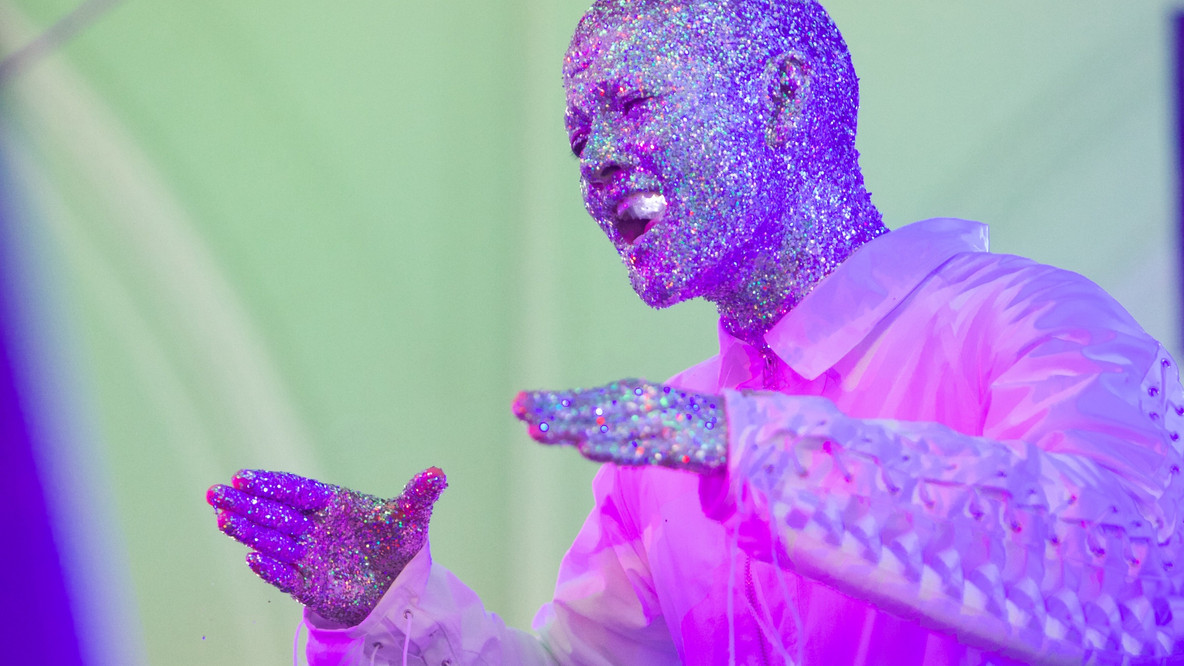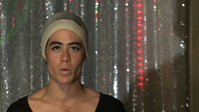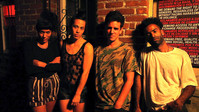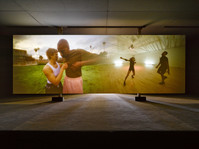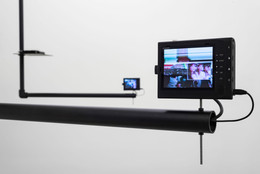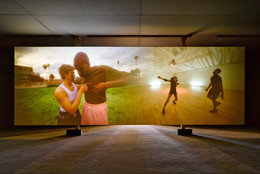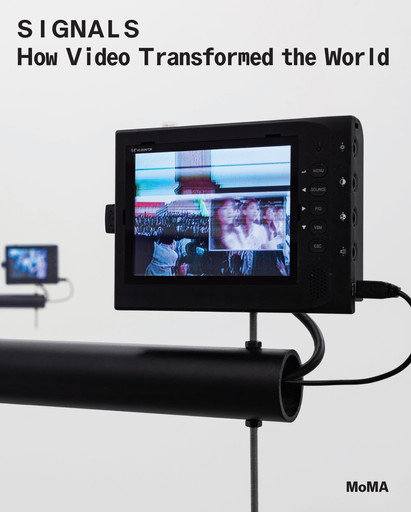“I like to think of [film] as a performance that’s never finished—this ongoing thing that keeps taking different shapes.”
Wu Tsang
“Whose voices are heard, whose are silenced?” For Wu Tsang, who posed these questions in a statement from 2012, such interrogations are as relevant to social justice as they are to artistic expression. In both her practice and everyday life, she intertwines aesthetic performance and political activism, from socially conscious performance and video art to free legal assistance and safe-haven spaces for immigrants and marginalized groups. As a filmmaker, multimedia artist, and performer, Tsang uses a notable range of inspirations, materials, and settings for her work, of which recent examples include video collaborations with scholar and poet Fred Moten and choreographed performances for the stage.
In Wildness (2012), her first feature-length film, Tsang blends fact and fiction through documentary aspects and what the artist describes as “magical realism.” The film’s title refers to a weekly club night that Tsang organized at Los Angeles’ Silver Platter, one of the city’s original gay bars and a recognized refuge for the Latinx trans community. By personifying the Silver Platter as a narrator, Tsang creates a composite character through which to share the perspectives and experiences of the bar’s patrons. “I was approaching it more as an activist trying to be a filmmaker,” Tsang said of the film. “I felt there was an important story to tell about the lives of my friends at the bar, many of whom were trans women and undocumented immigrants, often struggling with overlapping invisibilities, and thriving despite intense conditions of violence and policing.” The film’s combination of celebratory imagery and moving personal stories allows Tsang to reconsider the notion of so-called safe space and the communities it serves.
In multiple works, Tsang incorporates audiovisual citations to emphasize the processes—and problems—of representation and recognition. Her 2008 video The Shape of a Right Statement, also filmed at the Silver Platter, captures Tsang’s reperformance of a text published in 2007 by autism rights activist Amanda Baggs. Standing before the Silver Platter’s sparkling stage curtain and looking into the camera, Tsang recontextualizes part of Baggs’s diaristic manifesto and speaks in a digitally modulated version of her own voice: “The way I naturally think and respond to things looks and feels so different from standard concepts…that some people do not consider it thought at all.” As Tsang rehearses the text before the camera, her eyes begin to glisten with tears. By restaging Baggs’s words as a form of video self-portraiture, the artist invites us to contemplate the complexities of language and the ambiguity of subjectivity, an invitation that may further prompt a reexamination of our beliefs about selfhood and individual experience.
Dana Liljegren, Mellon-Marron Research Consortium Fellow, Department of Drawings and Prints, 2021
Note: opening quote is from “Wu Tsang & boychild by Tess Altman,” interview in BOMB Magazine, August 18, 2017. http://bombmagazine.org/articles/wu-tsang-boychild/.
